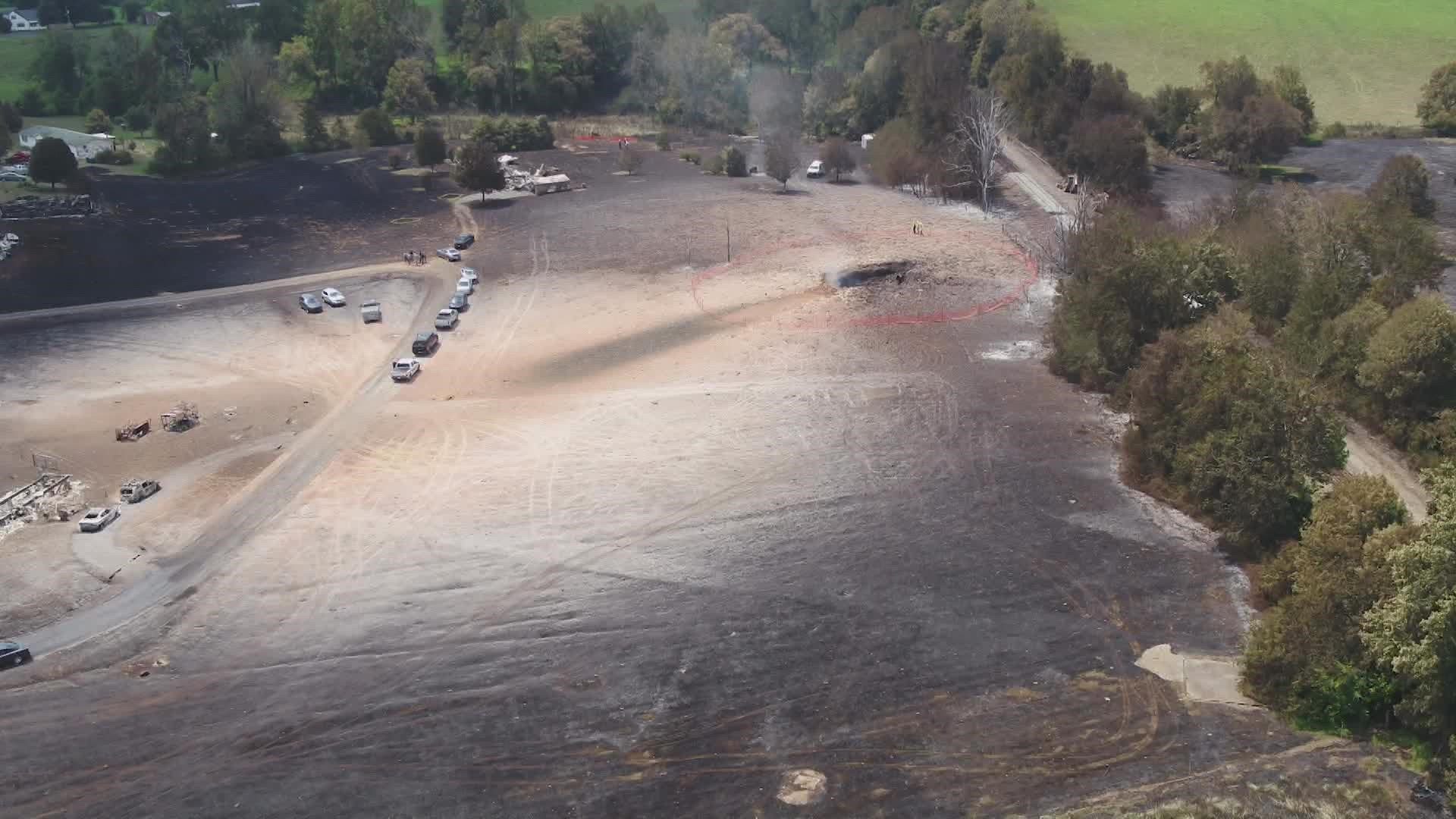LINCOLN COUNTY, Ky. — You've probably driven past a white plastic tube in the ground, marking the presence of a gas pipeline.
You've definitely seen the ads on TV and radio asking you to call 811 before digging, to make sure there's nothing in the ground.
But you may never have thought about the possibility of a pipeline rupture.
For people in the Indian Camp neighborhood in northern Lincoln County, that became a reality at 1:23 a.m. on Aug. 1, 2019.
"I was in a daze when I woke up...just didn't know what was going on," Robbin Turner said, whose front door is less than 1,000 feet from the site of the rupture.

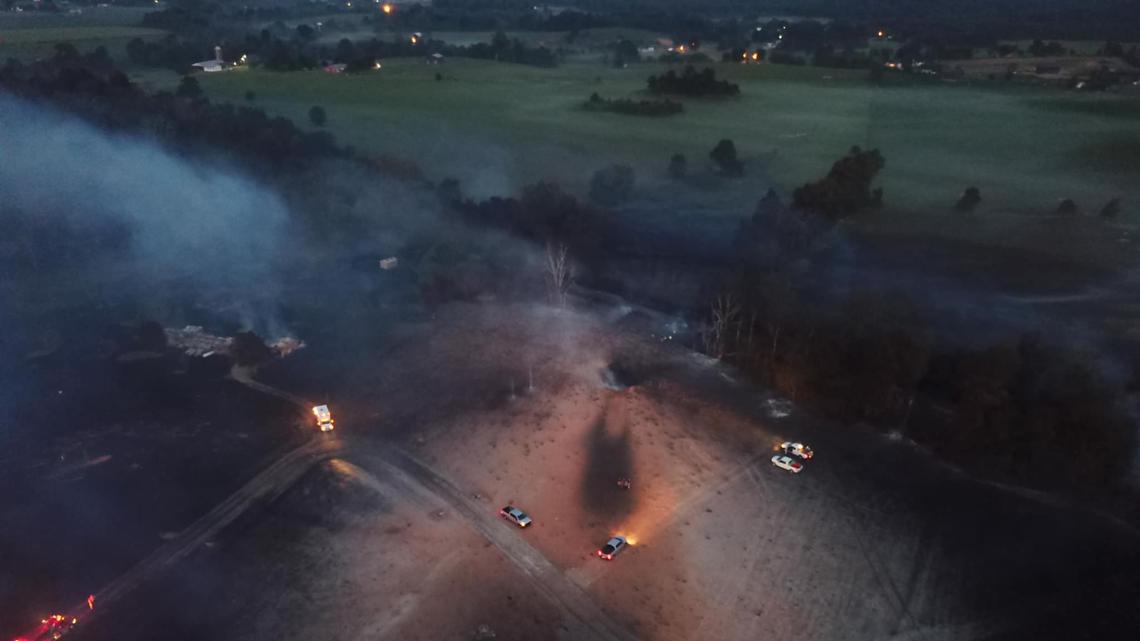
A 30-inch diameter pipe, part of an interstate natural gas pipeline from Texas to New York, ruptured and released 101.5 million cubic feet of natural gas. It also created a massive fireball.
"The shaking I thought --at first-- was the aftershock from a nuclear explosion. That's what my brain was telling me," Turner said.
Turner saw flames shooting hundreds of feet in the air. It melted the vinyl on the side of her house, and melted paint on her and her husband's two trucks.
The explosion killed 58-year-old Lisa Derringer, who was a grandmother and friend to many people in the neighborhood. Six others were hospitalized. Five homes were destroyed and another 14 were damaged.


"One life lost is too many," Turner said.
The National Transportation Safety Board (NTSB) released its final report on the explosion Sept. 14, 2022.
The independent governmental regulator found Enbridge, the pipeline operator, committed several errors in the lead up to the explosion, with many of those factors contributing to the deadly accident.
Enbridge changed the Texas Eastern Transmission pipeline from a unidirectional line (going north) to a bi-directional line (flowing both ways) between 2014-2017. The NTSB found the company did not fully understand the changes in pressure and temperature this would create.
Enbridge also underestimated the presence of "hard spots" in the pipeline according to the report.
A hard spot is a point in a pipeline where metal is harder than the surrounding metal. This can cause a small heat system to occur, which increases temperature.
Hard spots are not always an issue, and they are created during the manufacturing phase, before it's in the ground.
READ THE FULL REPORT:
According to the NTSB report, Enbridge hired a company to test for hard spots in the Lincoln County area in April 2011. They calculated that there were 16 hard spots in a 19-mile segment between compressor sites.
Enbridge also rated the threat of hard spots in the specific segment that ruptured as 1.53 out of 10, with zero being a non-risk.
After the explosion, the NTSB directed Enbridge to measure again for hard spots. This time, with eight years newer equipment, the company found 441 hard spots along the same 19 miles.
The third party Enbridge hired said this was due to advances in technology.
The deadly rupture occurred at an overlap of two hard spots.
"These companies say that in-line inspection is just as good as bringing it out of the ground and looking at it. But we keep seeing these ruptures after in-line inspection," Bill Caram, director of the Pipeline Safety Trust, said.
The Pipeline Safety Trust is a pipeline watchdog group out of Washington.
When asked about the current threat of hard spots, Enbridge told the FOCUS team, "We have done 180 digs and eyes-on inspections over 2,400 miles and have addressed all hard spots."
The NTSB also used the Lincoln County explosion as an example to call for national change.
The calculated "potential impact radius" for this line was 633 feet, but homes were damaged as far away as 1,100 feet, and Lisa Derringer's body was found 640 feet away.
The NTSB is now asking the Pipeline and Hazardous Materials Safety Administration (PHMSA) to change its calculations for the PIR radius.
"We were told that we were in the safety zone. Well, someone needs to change that because it's wrong. It's wrong right now," Turner said.
In a statement to FOCUS, Enbridge wrote:
The pipeline incident in the Indian Camp community in 2019 should not have happened and Enbridge is deeply sorry for the impact it had on the community, the loss of life suffered by one family, and injuries that befell others. It's a stark reminder that safely maintaining and operating our pipelines is essential and needs to be our first priority. From the time of the incident, we engaged with the first responders, community members and others affected by this event. We have done our best to actively address safety and the needs, concerns and questions of the community.
We take the recommendations from the NTSB very seriously and in coordination with the agency and PHMSA, our federal regulator, have worked diligently to understand the contributing factors to this incident.
We have made tremendous strides to change our procedures, processes and conducted extensive inspections in an effort to make our pipes safer than ever. Specifically, we have completed inline inspections of 2,468 miles of our pipeline using a sophisticated device similar to an MRI, ensuring the health of our pipes. Where we identified a hard spot, we dug up the pipe and put human eyes on the issue. We performed 180 digs over the 2,400 miles and addressed all hard spots.
FOCUS also looked for natural gas pipelines closer to Kentuckiana.
The northern edge of the Texas Eastern Transmission line runs through Jackson and Jennings County, Indiana.

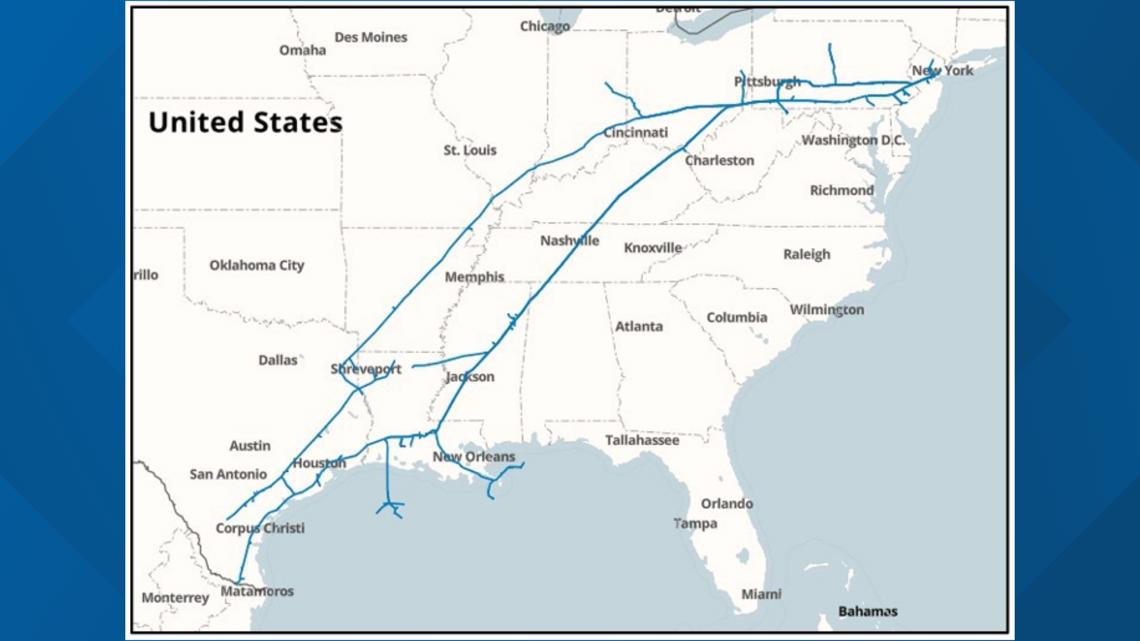
There is also a pipeline running right through Louisville.
The Texas Gas Transmission Line (TGT) starts in Louisiana and ends in Ohio. Through Jefferson County, it goes through Fairdale, Okolona and Jeffersontown.

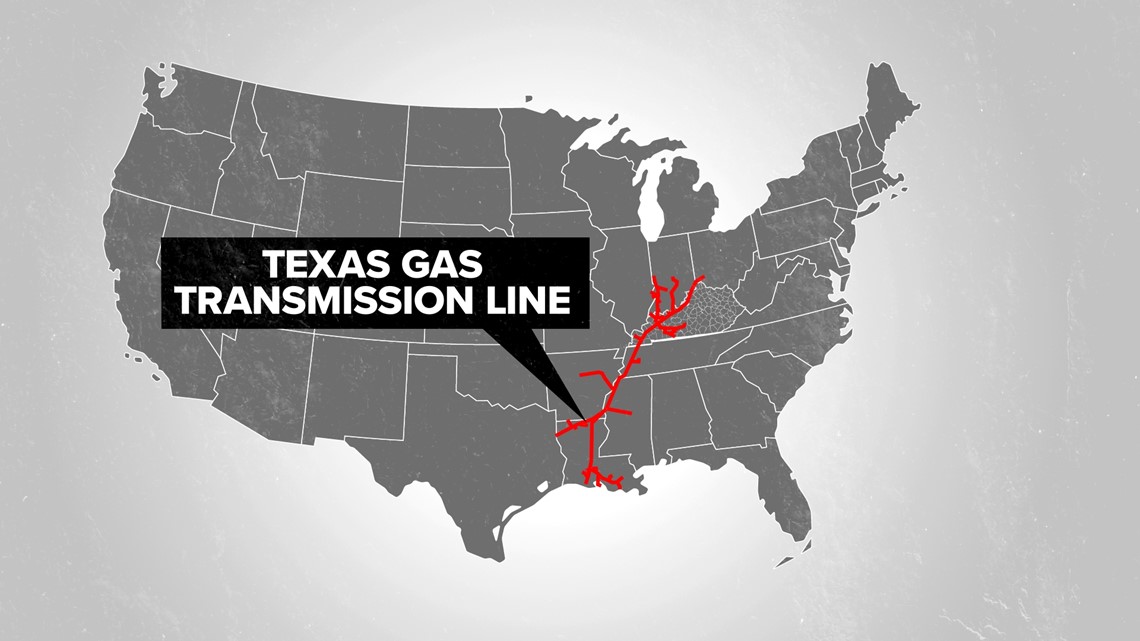

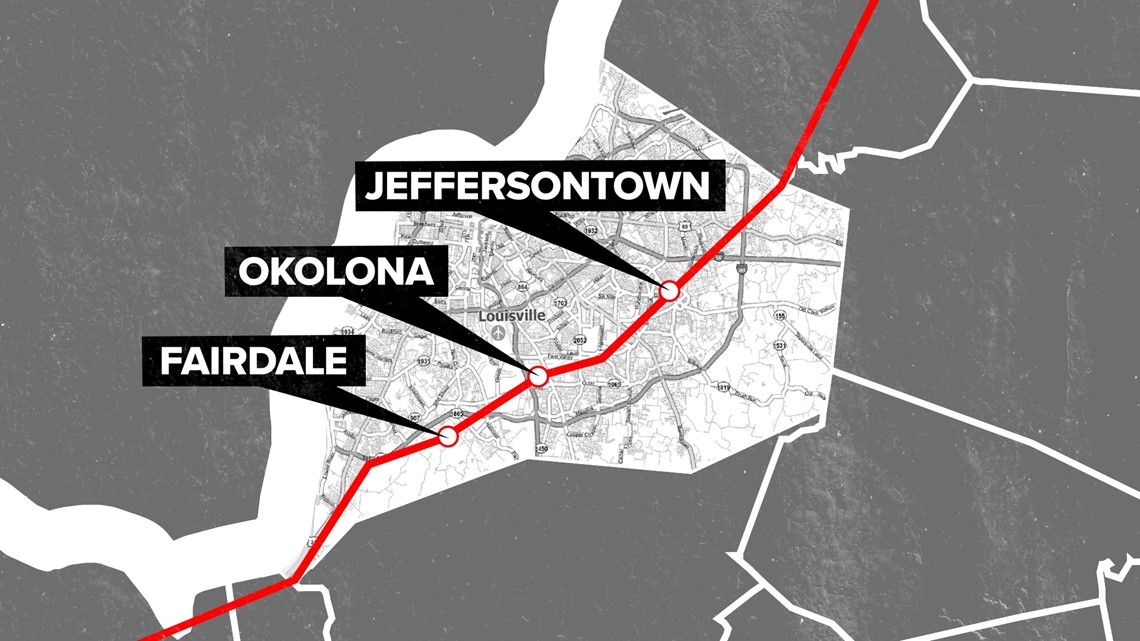
The TGT pipeline has had 27 incidents reported to PHMSA since 2014, but there have been no reported injuries or deaths. The total amount of property damage is $5 million.
Specifically in Kentucky, there have been three leaks or mechanical punctures. None have been near the metro area, with two in Muhlenberg County and one in Glasgow.
Gas did not ignite in any of the three.
Make it easy to keep up-to-date with more stories like this. Download the WHAS11 News app now. For Apple or Android users.
Have a news tip? Email assign@whas11.com, visit our Facebook page or Twitter feed.

